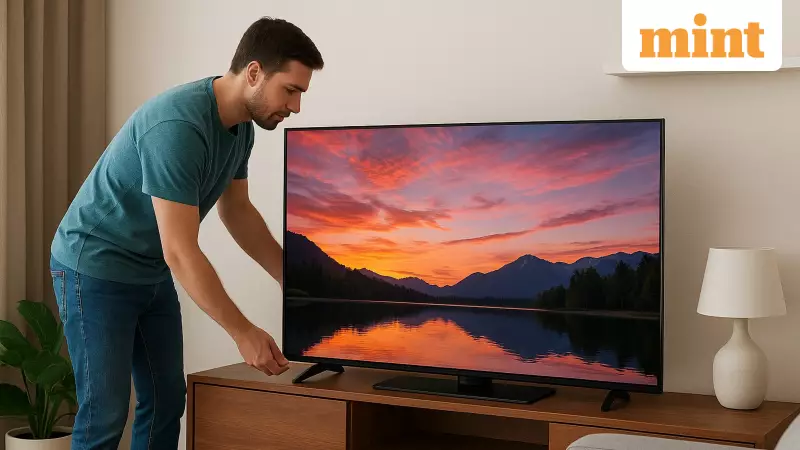
The thrill of setting up a brand new OLED TV is an experience that rivals unboxing a flagship smartphone or a powerful new laptop. The moment you power it on, the colours explode with vibrancy, and the picture quality feels light-years ahead of your old television. However, the initial setup process is critical. The choices you make in that first hour can either unlock the TV's full potential or lead to a subpar viewing experience for years to come.
A few simple missteps can result in a dull picture, inconsistent brightness, or even long-term damage to the delicate OLED panel. The good news is that with a little knowledge, you can easily sidestep these pitfalls. Here are the five most frequent mistakes people make when setting up their new OLED TV and the straightforward solutions to ensure you get the breathtaking performance you paid for.
1. The Solo Setup Struggle
While you may pride yourself on being self-sufficient, setting up a large OLED TV is one task where you should definitely ask for help. Despite their incredibly slim and lightweight design, these TVs are not easy to handle alone. The panels are somewhat flexible and can be susceptible to bending if you lift them from an awkward angle. For any model larger than 48 inches, it is highly advisable to have a second person assist you with removing it from the box and attaching the stand. Once the base is securely fixed, moving the TV becomes a much safer and simpler task.
2. Breaking Free from Default Picture Modes
Most new televisions ship in a default picture mode that is designed to be eye-catching in a brightly lit store. This 'Vivid' or 'Standard' setting is often far too harsh and colour-inaccurate for a home environment. To see the content as the creators intended, you should immediately switch to a more refined picture preset. Look for modes like Filmmaker Mode, Cinema, Movie, or Professional Mode, depending on your TV's brand. These settings are calibrated for accuracy and may appear slightly warm at first glance, but give your eyes a short time to adjust, and you will be rewarded with far more natural and balanced colours.
3. Taking Control of Your Room's Lighting
OLED panels are engineered to meticulously manage their own brightness to protect the screen. However, when you leave features like the ambient light sensor enabled, the TV starts making its own decisions. It will automatically dim or brighten the picture based on the lighting in your room, often doing so at inopportune moments and disrupting your viewing. For a consistent and reliable brightness level, you should manually turn off settings such as Energy Saving Step, Brightness Optimisation, or Ambient Optimisation. This prevents the TV from unnecessarily dimming during a dark movie scene just because a light was turned on in the room.
4. Patience with Pixel Refresh and Care
Your new OLED TV comes equipped with a powerful maintenance tool known as a pixel refresher. This function is designed to correct minor image retention or banding issues that can occur over time. Crucially, it is not a feature to be used on day one. Running the pixel refresh cycle too soon or too frequently can place unnecessary stress on the panel. You should only initiate this process manually if you notice persistent odd lines or patches on the screen. For routine maintenance, you can rest easy knowing that most modern OLED TVs automatically run a lighter, quicker version of this process in the background whenever the TV is powered off after a viewing session.
5. Embracing Built-in Panel Protection
Modern OLEDs are packed with intelligent features specifically designed to prevent screen burn-in and ensure long-term panel health. These are not marketing gimmicks; they are essential tools. Technologies like pixel shifting, logo dimming, automatic pixel-care routines, and aggressive screensavers work tirelessly to preserve your screen. Different manufacturers give these features different names—LG calls it OLED Care, while others may label it Panel Protection. During your initial setup, take a few minutes to explore this section in the TV's menu and make sure all these protective settings are enabled. It is a small step that pays significant dividends for the lifespan of your premium television.
By being mindful of these five common errors, you can ensure that your first hour with the new TV sets the stage for a flawless, long-lasting, and truly immersive home cinema experience. Your investment will be protected, and your viewing will be nothing short of spectacular.





